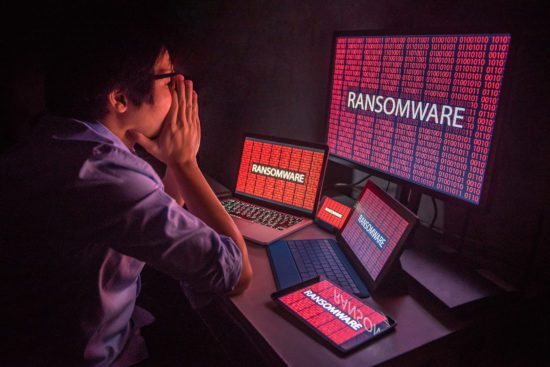Hackers are becoming savvier by the day, inventing new ways to circumvent the latest cybersecurity initiatives. Analysts can keep up, but regular internet users can alleviate their load by understanding the most common human errors hurting cybersecurity.
The World Economic Forum highlighted that human error causes 95% of cybersecurity issues. Implementing gradual security measures could dramatically increase safety, saving personal stress and professional catastrophe.
1. Poor Password Management
Password management encompasses healthy password creation practices and smart storage solutions. Whether for professional or personal use, every internet user must educate themselves on solid password management to secure their personal and professional data.
A study outlined the amount of time a hacker needs to crack passwords of specific compositions. Hackers can uncover an eight-character, numbers-only password instantly. However, a 12-character password consisting of numbers, upper- and lower-case letters, and symbols would take 34,000 years. Creating lengthy and complicated passwords is the first step in eliminating human error.
Next is storage. Writing passwords on sticky notes and displaying them publicly is not ideal password control. Memorizing passwords or using secure password managers like Bitwarden and LastPass, and enabling additional security measures for logging in – like two-factor authentication – both construct a stronger defense for password storage.
Using the same password for everything is risky. Don’t be in the 50% of people who do this, putting their digital resources in jeopardy.
2. Lack of Education and Awareness
It doesn’t matter if you are a solo entrepreneur in cybersecurity or working for a Fortune 500 in IT – everyone needs adequate cybersecurity training.
Not everyone needs to become a professional or know the exact steps to take in a cyberattack. However, it’s vital to know the red flags for scams, the basics of preventive software, and how to stay updated with trends. The industry is constantly in flux depending on global circumstances, so training will not be a one-and-done solution. It will consist of regular maintenance.
IT departments can institute programs to form a more prepared workforce. Do your employees know how to recognize a phishing email? Do they understand the importance of using secured networks with trusted machines?
Never assume the workforce knows proper practices. Though technological literacy grows, and many industries depend on tech to the point where their sector may be considered technology-adjacent, it does not mean they are aware of safety procedures. Provide education and training for everyone so there is a foundational level of knowledge.
3. Misconfiguration During Assembly
Configuring machines to reduce their vulnerabilities to cybersecurity threats is the start of the security process. When configuring a device, creating a substantial foundation for users is vital. If the machine is not sound in the first place, it does not matter what passwords or training users employ.
Misconfiguration occurs when security settings are incorrectly implemented or not well-defined, creating gaps for hackers to abuse. Examples of poor configuration practices include:
- Inadequate compliance with industry security standards
- Improper configuration of security frameworks for everything from applications to servers
- Dismissing security implementation for cloud access
- Poor firewall or antiviral software management
There are benchmarks that act as frameworks for enabling proper configuration, such as the Center for Internet Security’s (CIS) practices or the Open Web Application Security Project (OWASP) standards. Using these resources will provide guidelines for homing in on more robust configurations.
4. Insufficient Network Management
Creating a robust network involves numerous moving parts, including VPNs (virtual private networks) and regular security patches, to name two. Networks require near-constant surveillance to manipulate and update as risk analysis fluctuates and user behaviors change.
Performing regular risk assessments and forming plans to strategize against potential attacks will create springboards for stronger network management. Considering worst-case scenarios like breaches will provide insight into infrastructure implementation improvements.
Another way to curb this human error is by defining access. Which employees have access to certain information or programs? Is it necessary for specific teams or individuals to have those permissions or is it extraneous?
5. Outdated or Unauthorized Software Usage
If companies don’t take the time to update their software, it is more prone to cybercriminal activity. Software is updated to maintain optimal infrastructure in a constantly changing industry.
When companies ignore software updates, they leave opportunities for hackers to exploit their complacency. Antivirus software could be on every system, but it does not mean anything if the antivirus can’t defend against new threats.
Automating updates is one of the best ways to stay on top of this, as well as teaching employees how to check updates regularly so the habit becomes ingrained.
This works in conjunction with downloading unauthorized software. Allowing workers to download from potentially malicious sources freely endangers everyone. One way to prevent this is to create strict restrictions for employee access and ensure they understand the purpose behind it is for their security. This will reduce frustration and potential interruptions in workflow.
Preventing Human Error in Cybersecurity
Creating a safer online environment for employees must be a priority for all businesses. Knowing most security breaches are due to human error provides hope for the future of digital hygiene. If everyone can contribute to the myriad problems facing digital security, there is a greater likelihood of success.
The opinions expressed in this post belongs to the individual contributors and do not necessarily reflect the views of Information Security Buzz.



